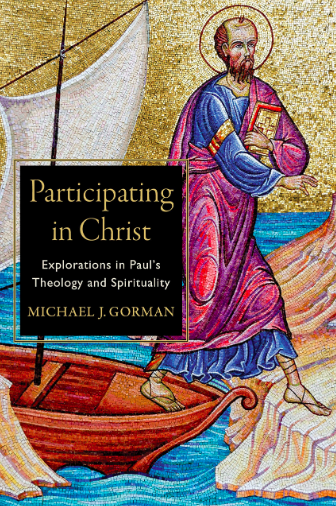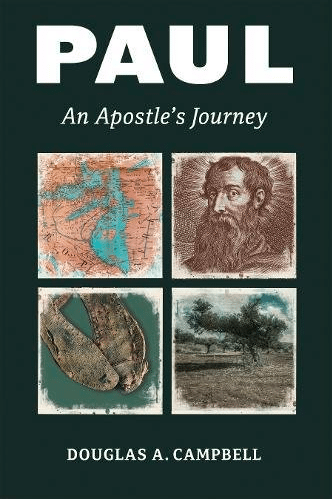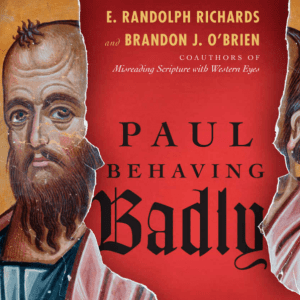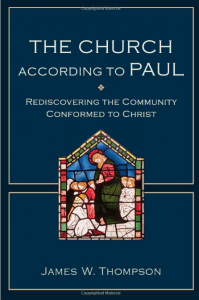 So many today love to contrast Jesus (and therefore themselves) with “religion” and “religion” is always bad and institutional and ritualistic while Jesus (and probably Paul, too) was not … but that means those who do this will be surprised when they read chp 13 of Wright’s massive study of Paul. One of the more innovative, if not controversial, dimensions of N.T. Wright’s Paul and the Faithfulness of God, is that he contends Paul formed a “religion.” But he has to clear the ground first, so here goes:
So many today love to contrast Jesus (and therefore themselves) with “religion” and “religion” is always bad and institutional and ritualistic while Jesus (and probably Paul, too) was not … but that means those who do this will be surprised when they read chp 13 of Wright’s massive study of Paul. One of the more innovative, if not controversial, dimensions of N.T. Wright’s Paul and the Faithfulness of God, is that he contends Paul formed a “religion.” But he has to clear the ground first, so here goes:
The question was posed in terms of the standard protestant assumption, strengthened through the theology of Karl Barth: ‘religion’ was something humans did to try to gain favour with God, whereas‘revelation’ was what happened when God, as an act of free grace, chose to unveil his love or his purposes to humans.2 Seen from this point of view, Christianity was not a ‘religion’ at all, since it was about divine grace rather than human effort, and the question was whether the Old Testament shared this character, or whether it had to be seen as the Jewish version of the human effort to please God, or even to know him.
It would be interesting to map this discussion onto the larger German debates of the twentieth century: for instance, Deissmann’s insistence that Paul himself was an archetypal homo religiosus against Käsemann’s insis- tence that it was precisely against homo religiosus that Paul’s ultimate polemic was directed. That remains a task for another time. The particular insight came with the response by Professor James Barr, who had recently moved to Oxford from Manchester. He pointed out that in England the word ‘religion’ carried few if any of the negative connotations presupposed in the German title of the paper. In England, ‘religion’ meant, more or less, ‘what some people do on Sunday mornings’, with a penumbra of assump- tions about ethical standards and personal piety (perhaps with a dash of what might be called ‘mysticism’). People might not wish to join in, but neither they nor the worshippers perceived ‘religion’ as a bad or dangerous thing (unless the mysticism got out of hand).
Times have changed, of course. We have more recently had Richard Dawkins and his ilk telling us that ‘religions’ are bad both for their practi- tioners and for society as a whole; a kind of turbo-charged and politicized version of the continental protestant position.3 There has also grown up in some evangelical, fundamentalist and similar circles a sense that ‘religion’ is what happens in boring mainline churches while they themselves are enjoy- ing something quite different: a living relationship with God, perhaps, rather than an outward form. Those, too, are issues to be addressed elsewhere, but they locate the subject of the present chapter in relation to the varied uses of the word in contemporary thought, with a warning against importing into a historical study the assumptions and prejudices of a much later age (1320-1321).
This is all the more complicated in that several works which have discussed Paul in terms of‘religion’ have not made this distinction clear. Locating the study of early Christianity within university and college ‘Departments of Religion’ has had a massive, if mostly hidden, impact on the way in which the subject is perceived, carrying the implication that we all know what ‘religion’ is –and that, for instance, it has little or nothing to do with politics or ‘real life’. When the traditional subject-matter of early Christianity is put into the box we now call ‘religion’, various things hap- pen (1321).
Wright turns to how EP Sanders’ grand and influential project on Paul (creating the new perspective) had an 18th Century understanding of religion, making Paul too Protestant and too soteriological, and at the same time not Christian enough … and then he peers in through the window at Ashton’s important and recent work… and then to Gerd Theissen’s “semiotic cathedral” image…
But once we understand 1st Century Roman world, “religion” is different. How so? What did it look like?
We saw in chapter 4 that, according to Cicero at least, the religion of the Roman world was divided up principally into (a) ritual (especially sacrifice, but also the various festivals according to the various sacred calendars), (b) the taking of auguries and (c) the searching of sacred books such as the Sibylline Oracles (1330).
And here Paul becomes someone with a “religion” or at least his churches sure looked like other religions. Baptism as entrance into the Exodus, sacrifice as a living act (Romans 6; 12) and Christ as Passover sacrifice, the breaking of bread as a rite, prayer, discerning the way … these are recognizable elements of Roman religio. Here’s his summary from p. 1352-1353:
The point is now made and can be summed up briefly. When we look at Paul’s worldview (Part II) and theology (Part III) in the light of the world of ‘religion’ we studied in chapter 4, we see both radical dissimilarity and perhaps surprising similarity. The differences are obvious, and would have been obvious to Paul’s communities and their neighbours. Not only did the Christians not join in with the pagan religious customs, they did not have their own version (as did the Jews) of the most central‘religious’ activity, namely animal sacrifice. But Paul was not shy about using the language and thought-forms of the religio of his day in relation to the activities which, as we saw, formed central elements of his praxis. Once we back off from the debates of the last two centuries in which the word‘religion’ in its modern sense has played such a key role, often being muddled up with protestant fears about ‘works-righteousness’, and locate Paul instead within his own world, there is nothing to lose and everything to gain by recognizing that he, his communities and their neighbours would have seen the central praxis of the early Christians as itself a form of religio. All the marks are there.
Above all, we have noticed that the things which Paul’s communities most characteristically did as part of their worship were seen by Paul, just as Jewish and pagan religio was seen by those who took part in it, as underlining and strengthening the unity of the community in question. Pagan religio bound together the polis and the gods in a single family. Paul believed in the One God, One lord of his revised Jewish monotheism, with the one spirit being poured out on all who shared this faith; and the‘religious’ things he and his communities did, especially baptism and eucharist, constituted a similar binding together of the community both in itself and within the life of this single divinity. This was not, of course, a subtle attempt by Paul or his communities to put the One God in their debt, as anxious theologians have sometimes imagined. Part of what Paul believed about this One God was that, in Jesus, he had put the whole world in his debt, completely and for ever. That is why one of Paul’s central motifs is gratitude. It is also why he seems to have turned the whole notion of debt on its head: the debt of love is the only form he permits.











